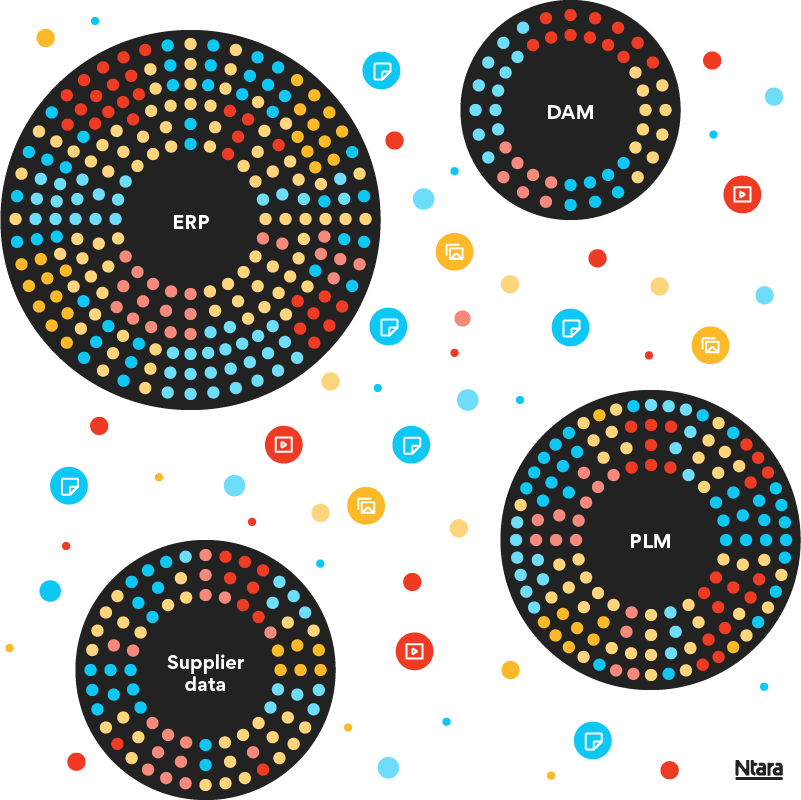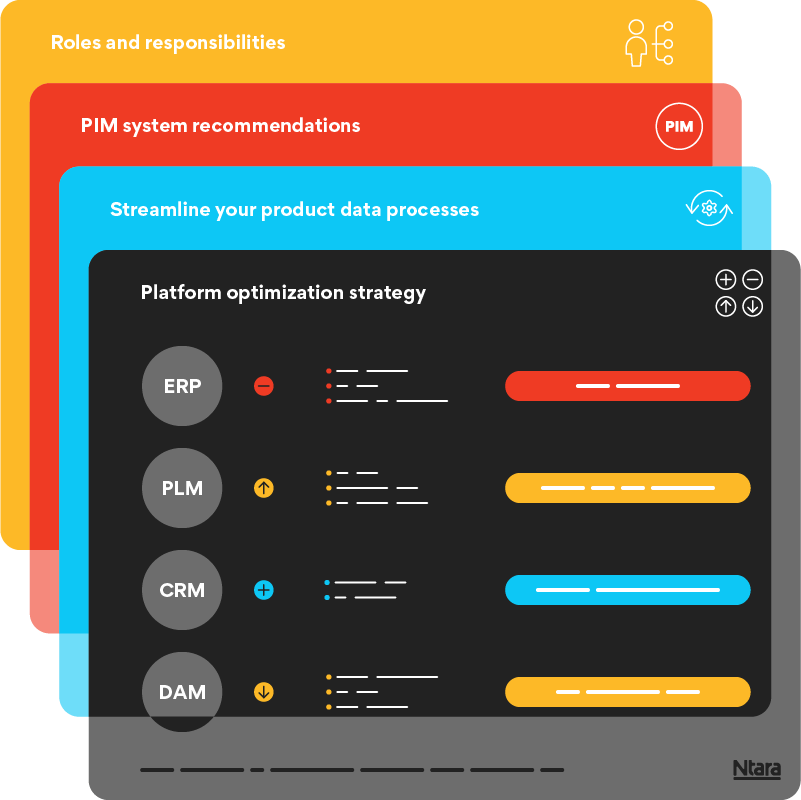
Whether documented or not, your business already has a product data lifecycle of some kind. Odds are, it has grown organically as your business scaled, and your team has always managed to get product data where it needs to go. So, where’s the problem?
A strong understanding of the product data lifecycle is the foundation for omnichannel ecommerce. This entails not just the “what” and “where” of product data creation and enrichment. It also includes the critical “when” each field of your product’s data is ready for production. If this mapping isn’t complete, it’s easy for digital transformation projects to disrupt or even break existing processes and systems.
Sound familiar? Symptoms of a non-optimized product data lifecycle look like this:
- No systems or process documentation
You aren’t sure if your current tech stack is ideal for your business needs - Multiple versions of the same data across different departments
There are questions about which version is the most recent or most complete - Duplicate work and rework across the organization
Your top employees are wasting time tracking down data - Manual errors resulting in inaccurate published product data
Creates customer frustration and erodes trust in your brand - Adding or expanding an ecommerce or marketplace channel requires an army
Key product lifecycle data is only held by specialized knowledge workers on your team

Why you need to map your product data lifecycle
Product information management (PIM) software can transform your product data lifecycle. But PIM doesn’t address the efficiencies you can gain across the entire product data lifecycle journey. This is because most data fields related to your product don’t originate in PIM. For manufacturers and distributors, many start in an ERP or PLM system.
PIM software is an essential part of any product-based, omnichannel business. But it is only one step in the entire product journey.
What is product data lifecycle mapping?
Product data lifecycle maps show every platform in your current product data ecosystem. Through the mapping process, our team works with your in-house product experts and marketers to identify what product fields are created in which systems. We determine when those fields are ready for deployment to a PIM system or other output.
Product process and system documentation gives you a visual roadmap for optimization. You’ll see duplication in some systems and gaps where others should go. This informs your software investments and illustrates which processes should be automated or updated.
Product data lifecycle mapping is often conducted as part of a larger PIM system analysis or product data consulting project. It provides context for strategic decision making. But it’s also an excellent standalone project for businesses who want to better understand their product data flows.


How Ntara approaches product data lifecycle mapping
A map is only good to you if you know where you are and where you are going. More than just a series of documentation, Ntara’s consulting deliverables give you actionable insights. An Ntara product data lifecycle map will tell you:
- Which platforms to add, remove, or adjust
Reduce cost and increase value by optimizing your software ecosystem - How to streamline your product data processes
Automate where possible to increase overall efficiency - If you need a PIM system, or if your existing PIM system is optimally deployed
What information should be hitting the PIM at which time, or is a PIM system necessary for your organization - Who’s doing what at which point in the process
Understand pain points and how they affect performance
Product data lifecycle mapping informs your roles and responsibilities. This frees up time for your staff to focus on higher value things.
What you get from a product data lifecycle mapping
By the end of this project, you’ll have documentation of your current state and your plan for the future, including:

Current system diagram
How your product ecosystem captures and transfers product data today

Proposed system diagram
How your product ecosystem should change to best suit your company needs

Product timeline & journey map
Where product fields originate, when they’re final, and workflow considerations

Efficiency and consistency recommendations
Big picture plan to efficiently create product data and address consistency concerns
Get more product data content in your inbox.
Join our email list to receive information from the digital consultant’s perspective.
Could you benefit from a product data audit?
Identify the major problems with your product data and learn how to resolve them.
Ready to discuss your product data lifecycle?
Schedule a meeting with a member of our team to begin the conversation.
